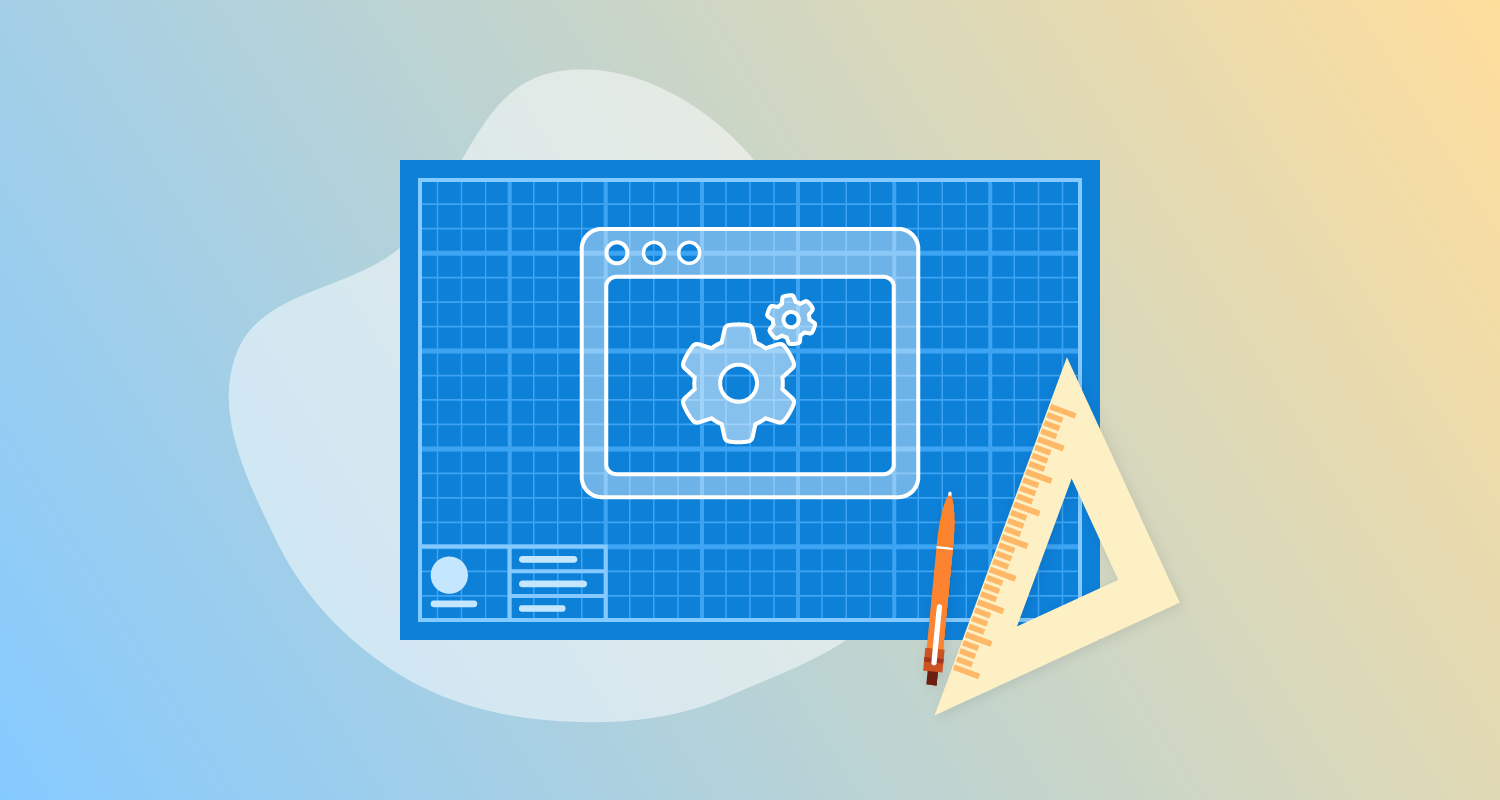Kubernetes in production refers to deploying and managing containerized applications in a live environment using Kubernetes. It automates deploying, scaling, and operating application containers. Kubernetes in production ensures software can run consistently regardless of the underlying infrastructure, enabling companies to adopt agile and DevOps practices. This environment supports container orchestration, managing clusters, load balancing, scaling applications, and deployment.
Production environments using Kubernetes handle high availability, rollback strategies, and fault tolerance. Kubernetes orchestrates the distribution of containerized applications across clusters while optimizing resource use and ensuring all system parts work efficiently. Deploying Kubernetes in production enhances scalability, reliability, and efficiency in handling real-world workload demands.
This is part of a series of articles about Kubernetes CI/CD.
The role of Kubernetes in modern production environments
In modern production environments, Kubernetes orchestrates containerized applications, enabling efficient resource use and scalability. By abstracting the underlying infrastructure complexities, Kubernetes automates processes like deployment, scaling, and operations, ensuring applications are always available and up-to-date. This adaptability aligns with the shift toward microservices architectures and Continuous Integration/Continuous Deployment (CI/CD) practices found in agile development.
Kubernetes enhances infrastructure flexibility by managing service discovery, load balancing, and scaling applications based on demand. It supports modern production environments by facilitating rapid iteration and deployment cycles. Kubernetes’ capability to optimize workflows, ensure high availability, and provide failure recovery mechanisms makes it indispensable in managing the complexity and dynamic nature of contemporary production environments.
Core components of a production-ready Kubernetes cluster
Here are some of the core components required to run Kubernetes clusters in production.
Control plane configuration
The control plane is the heart of a Kubernetes cluster, managing node functionality and ensuring the orchestration of workloads. It comprises several key components, including etcd, the API server, the controller manager, and the scheduler. Configuring the control plane for production involves securing communication between these components, implementing redundancy, and ensuring high availability to mitigate risks of outages and maintain cluster health.
A production-ready control plane configuration also entails regular updates to security patches and Kubernetes versions, which necessitates smooth version upgrades with minimal impact. Maintaining a backup strategy for etcd ensures data integrity and reliability in case of failures. Additionally, monitoring the control plane’s performance and resource use is crucial to preemptively address any potential issues.
Worker nodes setup and management
Worker nodes execute the workloads in a Kubernetes cluster, so their proper setup and management are crucial for a production environment. Each node requires a kubelet, a container runtime, and a kube-proxy to function efficiently. Ensuring node scalability and availability involves configuring an appropriate number of worker nodes based on anticipated workloads and implementing auto-scaling policies for dynamic resource management.
Robust monitoring and alerting systems are necessary to detect and resolve node failures swiftly, minimizing downtime. Security best practices, such as up-to-date operating systems, secured configurations, and access controls, are vital for safeguarding nodes. Implementing measures like node pools can categorize nodes based on workload profiles, optimizing performance and resource allocation in multi-tenant or large-scale environments.
Setting limits on workload resources
Setting resource limits in Kubernetes helps control resource consumption by applications, preventing any single workload from monopolizing cluster resources. This process involves specifying requests and limits for CPU and memory resources in the YAML configurations for deployments. Resource requests guide the scheduler in placing pods on nodes with adequate resources, while limits ensure a pod does not exceed designated consumption thresholds.
Regularly reviewing and adjusting these resource configurations based on real-world use and performance data keeps the cluster optimized. Tools that provide insights into resource use patterns help in effectively managing and adjusting resource settings.
Key challenges of running Kubernetes in production and how to solve them
1. Complexity of setup and management
Setting up Kubernetes in production is complex, involving configuring multiple components to work efficiently. Operators must understand Kubernetes architecture, including clusters, pods, and nodes. The operational complexity extends to maintaining consistent environments across development, testing, and production, which can strain resources and increase the risk of errors.
Configuring high availability for the control plane, automating deployments, and ensuring scalability further complicates the setup process. Management involves constant monitoring and maintenance to ensure cluster health, performance, and security, requiring a dedicated team proficient in Kubernetes operations.
How to solve: To address the complexity of Kubernetes setup and management, organizations should adopt automation tools. These tools simplify configuration, enable repeatable deployments, and minimize errors. Using managed Kubernetes services can offload much of the operational burden, including control plane management and upgrades.
2. Deployment automation
Automating deployments in Kubernetes is essential to streamline the release process and ensure consistency across environments. However, this introduces challenges such as managing complex deployment pipelines, handling dependencies, and minimizing downtime during updates.
Kubernetes supports rolling updates out of the box, and with additional tools, it can support progressive deployment strategies like blue-green and canary deployments.
How to solve: Using Continuous Integration/Continuous Deployment (CI/CD) tools like Jenkins or ArgoCD can simplify deployment pipelines. These tools integrate with Kubernetes to automate testing, versioning, and rollout strategies, ensuring consistency and reliability. Use deployment strategies like canary releases or blue-green deployments to minimize downtime and reduce the risk of issues in production.
Learn more in our detailed guide to Kubernetes CI/CD services
3. Networking and connectivity issues
Kubernetes networking presents challenges, such as ensuring connectivity between services and managing ingress and egress traffic. By default, Kubernetes provides basic networking for pods, but complexities arise when integrating with existing on-premises or cloud architectures. Network policies must be carefully configured to secure communication and prevent unauthorized access.
Working with multi-cluster deployments or hybrid cloud setups introduces additional layers of difficulty in maintaining consistent connectivity and security. Network latency, bandwidth throttling, and communicating across firewalls can lead to performance degradation unless proactively managed.
How to solve: Use Kubernetes NetworkPolicies to control pod communication and enforce security at the network level. The Kubernetes Gateway API can simplify ingress and egress management, providing better support for advanced traffic routing and API gateways. Service meshes offer advanced features like traffic shaping, secure service-to-service communication, and observability.
4. Configuration management
Managing configurations in Kubernetes is a recurring challenge, as it requires balancing simplicity, scalability, and security. By default, Kubernetes provides ConfigMaps and Secrets as tools to allow you to externalize your configuration, however, maintaining these objects across multiple environments can become complex. Mismanagement of configurations can lead to issues such as application failures, security vulnerabilities, or performance bottlenecks.
Version control of configurations is crucial, especially in environments with frequent updates. Storing configuration files in Git repositories helps maintain a single source of truth and ensures traceability. Tools like Helm and Kustomize can further simplify managing configurations by enabling templating and overlays, reducing duplication, and allowing environment-specific customization.
How to solve: Adopt GitOps practices to manage configurations declaratively through version-controlled repositories. Tools like Helm enable modular, reusable configurations, reducing complexity and improving scalability. Implement parameterized templates to support environment-specific customizations while avoiding duplication. Combine ConfigMaps and Secrets with tools secure storage solutions for secure and efficient configuration handling. Apply CD orchestration solutions like Octopus to manage configuration templates and automate declarative manifest updates.
5. Security and compliance concerns
Security is a significant concern in production Kubernetes environments, demanding a proactive approach to vulnerabilities and compliance. Operators must implement role-based access control (RBAC) and regularly update clusters to protect against the latest threats. Kubernetes’ open nature means careful configuration is crucial to prevent unauthorized access to the system’s sensitive parts. Keeping secrets and credentials secure within the cluster is essential for maintaining security integrity.
Compliance with organizational policies and regulatory standards further complicates operations, often requiring custom configurations. Monitoring and audit logging are essential to detect and respond to breaches or suspicious activity promptly. Integrating with existing security tools and processes, such as SIEM systems and vulnerability scanners, is crucial but can stretch resources and technical capabilities. Security concerns necessitate continuous improvement strategies and best practices to keep Kubernetes deployments safe.
How to solve: Implement security controls such as RBAC, PodSecurityPolicies, and network segmentation to enforce least-privilege access. Regularly audit cluster configurations and workloads to identify and mitigate vulnerabilities. Encrypt sensitive data, including secrets and communications within the cluster, to protect against potential breaches. Develop and enforce policies for secure container images and runtime security.
6. Storage scalability and reliability
Storage management in Kubernetes involves addressing the scalability and reliability needed for production workloads. Challenges arise from dynamic storage provisioning, requiring the integration of persistent storage solutions that match performance with workload demands. Stateful applications demand reliable storage with varying access patterns and performance characteristics, complicating the storage infrastructure.
Ensuring data availability and consistency across a scaled cluster often requires using storage systems with robust replication and failover features. Storage interfaces like the container storage interface (CSI) simplify integrating different storage solutions but can still require significant expertise and testing to ensure compatibility and performance in production. Kubernetes operators must align their storage strategies with application needs, balancing resource allocations while optimizing cost and efficiency.
How to solve: Use dynamic storage provisioning to scale storage based on application needs, using storage classes tailored to workload demands. Implement distributed storage solutions like Ceph, Portworx, or OpenEBS for reliable data replication and failover. Persistent storage volumes (PVs) with appropriate access modes ensure stateful applications maintain consistency. Regularly monitor storage performance metrics and perform stress tests to validate storage reliability under production loads.
7. Resource management and optimization
Optimizing resource management in Kubernetes requires efficiently allocating CPU, memory, and storage resources across pods, nodes, and clusters. Misallocation or over-allocation of resources can lead to performance issues or increased costs, making it crucial to implement strong resource management policies.
How to solve: Kubernetes provides tools for setting resource requests and limits, enabling better control over how resources are distributed. Operators must monitor resource use continuously, leveraging tools like Prometheus and Grafana to gain insights into performance and make necessary adjustments. Autoscaling mechanisms, including horizontal pod autoscaler (HPA) and vertical pod autoscaler (VPA), help dynamically optimize resource usage based on the current workload.
Best practices for Kubernetes in production
Implement Infrastructure as Code (IaC)
Using infrastructure as code (IaC) facilitates consistent, reproducible configurations for Kubernetes environments. IaC helps automate the provisioning and scaling of infrastructure components, reducing manual errors and enhancing efficiency. Tools like Terraform, AWS CloudFormation, and Ansible provide capabilities to define infrastructure attributes as code, enabling integration with DevOps workflows.
Establish monitoring and centralized logging
Effective monitoring and centralized logging are essential for maintaining operational insights and detecting anomalies in Kubernetes environments. Tools like Prometheus and Grafana offer real-time metrics visualization, enhancing proactive monitoring of cluster health and performance. Centralized logging solutions such as Fluentd, Elastic Stack (ELK), or Loki aggregate logs from diverse sources for consolidated analysis.
Use Role-Based Access Control (RBAC)
Implementing role-based access control (RBAC) in Kubernetes production environments is crucial for managing permissions and enhancing security. RBAC ensures that users only have the necessary permissions to perform their job functions, reducing the risk of unauthorized access and operations. Kubernetes’ native RBAC supports fine-grained permission models, allowing precise control over user roles and resource access.
Use GitOps for Continuous Deployment
GitOps adopts a declarative workflow for managing application deployments in Kubernetes, enhancing automation through version-controlled source code repositories. Tools like ArgoCD to ensure consistent and reproducible deployments derived from the source of truth. This approach simplifies rollback processes and accelerates deployment cycles.
Secure secret management
Secure secret management is critical in maintaining the integrity and confidentiality of sensitive data in Kubernetes environments. Tools like HashiCorp Vault or Sealed Secrets enable secure storage and access to confidential information, such as API keys, tokens, and credentials. Implementing robust secret management practices involves ensuring encryption of data both in transit and at rest, restricting access to authorized users only.
Set up backup and disaster recovery solutions
Implementing comprehensive backup and disaster recovery strategies in Kubernetes production environments ensures data availability and business continuity. It’s important to set up automated backups of persistent volumes and cluster configurations, supporting rollback and recovery from unexpected failures or outages. Defining clear recovery time objectives (RTOs) and recovery point objectives (RPOs) aligns backup processes with organizational risk thresholds.
Automate deployment pipelines
Automating testing and deployment pipelines in Kubernetes streamlines the entire software release process, ensuring consistency, efficiency, and reliability. An end-to-end Continuous Delivery (CD) pipeline integrates stages such as build, test, and deployment, automating tasks to minimize manual intervention and reduce the potential for errors. Tools like Octopus Deploy can fully orchestrate these pipelines, enabling smooth code delivery from development to production.
A robust CD pipeline incorporates automated testing at various stages, including unit, integration, and performance testing, ensuring that only validated code progresses, while modeling and automating different deployment pathways for an application. Post-deployment, smoke testing and canary deployments provide further assurance of functionality in the production environment. Effective pipeline automation accelerates delivery cycles while maintaining high quality standards.
Optimize for high availability and scalability
High availability (HA) and scalability are pivotal for reliable Kubernetes production environments. HA ensures services are consistently accessible, implementing redundancy across control plane and worker nodes, often employing multi-cluster or multi-region deployments for failure tolerance. Load balancing and auto-scaling configurations optimize resource distribution, responding dynamically to workload fluctuations.
Scalability practices align infrastructure capabilities with peak demand, leveraging horizontal pod autoscaler and cluster autoscaler tools to automate resource adjustments. Regular performance tuning, capacity planning, and stress testing ensure systems can endure demand spikes without performance degradation. Emphasizing HA and scalability maintains service reliability and supports business growth objectives.
Horizontal and vertical pod autoscaling
Horizontal and vertical pod autoscaling are key strategies for dynamically adjusting application resources in response to workloads. Horizontal pod autoscaler (HPA) scales the number of pods based on metrics such as CPU and memory, allowing for efficient handling of varying loads. This elasticity enhances performance and resource usage, maintaining optimal application operations across different traffic levels.
Vertical pod autoscaler (VPA) focuses on adjusting the resource requests and limits of individual pods, ensuring optimal resource allocation based on historical performance data. Both scaling strategies require precise metric configurations and continuous monitoring to avoid over or under-provisioning. Effectively implementing autoscaling involves understanding workload patterns and aligning them with SLAs.
Cluster federation and multi-cluster management
Cluster federation and multi-cluster management enable organizations to manage multiple Kubernetes clusters, enhancing resilience and scalability. Cluster federation creates a unified and consistent operational environment, simplifying management across geographies or cloud providers. It offers workload distribution, failover capability, and resource sharing.
Multi-cluster strategies involve managing clusters homogeneously or heterogeneously, depending on applications’ needs and compliance requirements. Using tools like Kubernetes Federation (Kubefed) and service meshes facilitates deploying, synchronizing, and monitoring workloads across clusters. Multi-cluster management fosters high availability, enhances data proximity, and optimizes resource use.
Related content: Read our guide to Kubernetes DevOps
Automating production Kubernetes clusters with Octopus
Octopus Deploy is a Continuous Delivery platform that helps organizations optimize their Kubernetes deployments and operations. With powerful automation, Octopus simplifies complex deployment workflows, infrastructure provisioning, and ongoing cluster management.
Automated Kubernetes deployments
Octopus provides an out-of-the-box solution for modeling and automating complex deployment scenarios. From CI/CD pipelines to progressive rollouts, Octopus ensures consistency across multiple environments. Automate the entire deployment process, including:
- Application deployments
- Testing and validation
- Change management
- Canary and blue-green deployments
Cluster provisioning made easy
Octopus integrates with Terraform, Ansible, and Bicep to automate infrastructure provisioning. Define a structured sequence of steps, including:
- Provisioning cloud or on-prem infrastructure
- Running validation tests
- Ensuring compliance with infrastructure-as-code principles
- Cluster Bootstrapping & System Application Management
With Octopus, you can automate Kubernetes cluster bootstrapping and ensure system applications are installed and maintained from a centralized control plane. This eliminates manual configuration drift and improves cluster reliability.
Simplified cluster maintenance with Runbooks
Octopus Runbooks enable teams to automate infrastructure maintenance tasks such as:
- Troubleshooting and diagnostics
- Scaling applications and infrastructure
- Network configuration updates
- Database maintenance
- Security patching
By automating these critical tasks, Octopus helps teams reduce downtime, improve reliability, and scale Kubernetes with confidence.
Learn more about Octopus Deploy.
Help us continuously improve
Please let us know if you have any feedback about this page.



